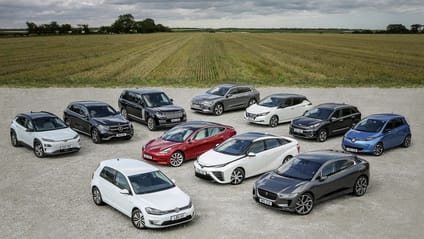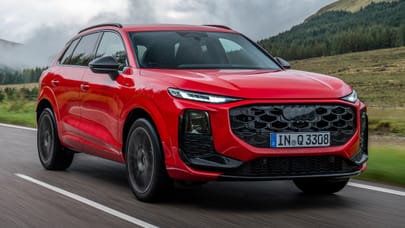
Your quick guide on how to buy a used electric car
Can you really make savings on your motoring? Get savvy about buying a secondhand all-electric car

What is an EV?

Frankly, you’ve been living under a rock if you’re this far into the 2020s and you’re still hazy on electric cars. But since the Lords’ report talked of misinformation, let's unconfuse it.
Simply, an EV is a vehicle using electricity for propulsion. The electric motor can be coupled with a fossil-fuel guzzling engine to make a hybrid (HEV or PHEV), but colloquially, when people say ‘EV’, they mean 100 per cent battery electric (BEV). That’s all there is to it.
Advertisement - Page continues belowMake sure you're ready for an electric car

Crucial question alert! Is an EV right for you? Spacious SUV-shaped EVs are fairly new to the market, so if your budget is tight, be prepared to compromise.
Calculate how far you travel on a daily and weekly basis and factor in your nearest charge points/access to a charging network. It's of course handy to have your own charge point, but if you don't, it's something to consider.
Consider an old (cheaper) EV

Electric cars date back as far as the 1800s, of course, but it'll be tricky to pick one of those up on a classified site. The more mainstream modern stuff starting coming through from 2010. Hardly prehistoric.
Back then, range was sufficient for the commute and then some - consider a first-gen Nissan Leaf had a 24kWh battery. (Second-gen took that to 40kWh). These early cars had a slightly different charge port (we'll come onto that) and will charge more slowly everywhere.
Upside? They can be picked up for as little as £2,500.
Advertisement - Page continues belowSpend more if you want to charge your EV faster

The newer the electric model, generally speaking, the bigger and cleverer the batteries. These used EVs are more likely to have the latest rapid charging technology and fancier cabin features, too.
Downside? Your pockets need to be considerably deeper. That weekly mileage calculation will determine if you really need to spend an additional £10,000 plus on your used EV.
Check the battery health

Follow these blue words to understand why battery degradation concerns are kinda misplaced. That said, it's essential to check the battery's health.
You can gauge it by seeing what the range reads at 100 per cent full battery, then compare with the promised range of a new one. While it's not a perfect science, it'll flag any glaring anomalies, in the unlikely event the battery has been abused.
Check for damage, especially the charging cable

Buying an EV is just like buying any other preloved motor. Check the bodywork, tyres and interior trim for signs of damage, corrosion or dodgy repairs.
You'll also want to check the V5C and find out if there's any outstanding finance on the thing.
With an EV, it's also important to check the charging cable. If it’s damaged, get the buyer to knock £100 off the asking price minimum – that’s what it'll cost you for a replacement.
Adjust your mileage mindset to EV mode

Calculating “good” mileage for a secondhand EV is different to doing so for a petrol car. Rather than targeting 10-12k per year average for the car's age, EVs can get away with doing a fair bit of extra distance – think fewer moving parts, legit coasting, etc.
Sure, heat management tech of the batteries in the older models isn't as good as today's new cars. It can mean some (replaceable) battery modules might fail, but entire pack failure is rare. Thus, a 'low mileage EV' can average higher miles than you’re used to.
Advertisement - Page continues belowTake your chosen EV for a test drive

EV or not, there's nothing like getting behind the wheel and trying a car for yourself. During said drive, listen out for any odd knocking or creaky suspension (don't forget those batteries are heavy). It'll be easy - remember, there's no noisy engine.
Awkward silence with your passenger seller? Don't sweat it – get your companion to stick the radio on, test the speakers and air-con (and handily, note the drop in predicted range).
Check the car's charge port type

Like the Apple vs. Android charge port war, EVs have been through a similar evolution. There's a medley of Type 1, Type 2, ChaDeMo and CCS options. In short, the most common port is Type 2, but some of the older Leafs have ChaDemo ports – DC connectors that are awkward to connect to AC-dominant British points publicly.
ChaDeMo is likely a dealbreaker for anyone relying on charging away from home. An adaptor taking the ChaDeMo to CCS (most common DC port now) or port conversion will cost upwards of £2,000. Ouchy.
Advertisement - Page continues belowDon't forget to check the car's service history

While there are fewer fiddly bits, an electric car is still... A Car. Be a good scout and make sure the service history is present and correct. If it isn't, it's not the end of the world, but it is a riskier purchase. Your call.
Find out if the battery is still being leased

Some older EVs were sold with a leased battery. That'll mean extra monthly costs. For example, £77 per month in the case of the Fluence (pictured). But a little birdie tells us there are no replacement batteries left.
Check with the brand – word has it, they might just sell you the thing for pocket money.
Haggle for a home charger

You could loop the three-pin plug through a window and sit until Christmas waiting for a smidgen of juice. Or you could treat yourself to shiny new wallbox.
Some dealers do, er, deals. All we can promise is you'll never need to visit a fuel station ever again.
Trending this week
- Long Term Review
Life with a 500bhp BMW 550e: do you really need an M5?







